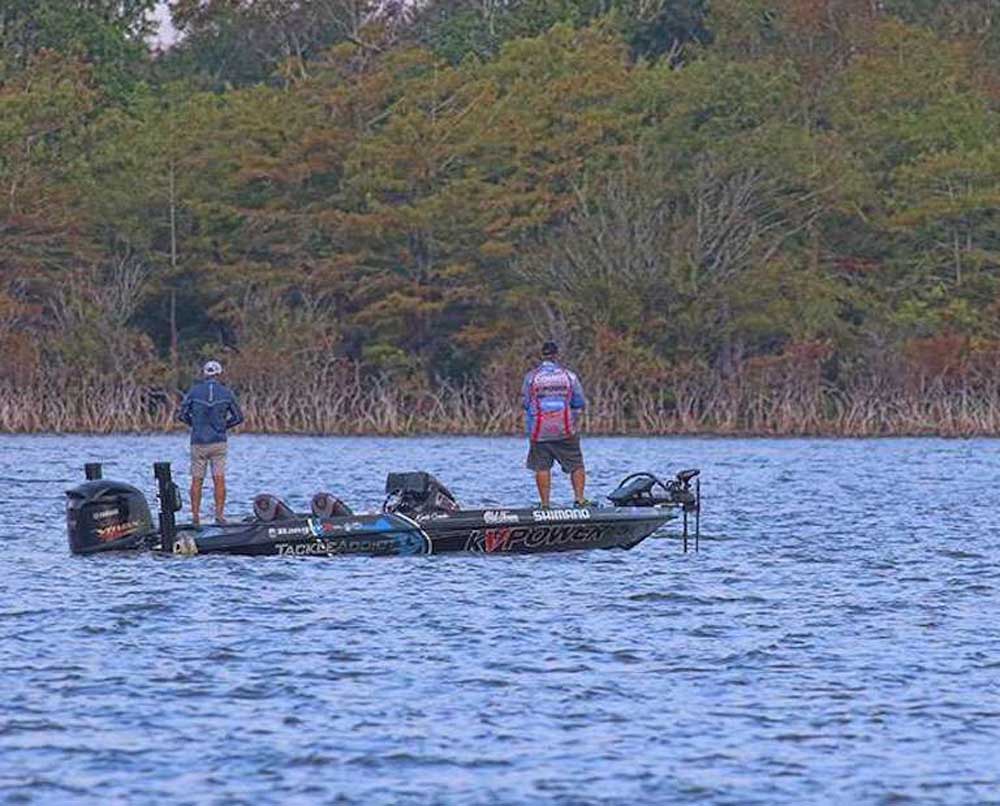Best Of The Best: East Texas Has Some Of The Top Bass Lakes In State, Country
Published 5:44 pm Thursday, April 28, 2022

- BASS pro angler Keith Combs, who lives in nearby Huntington, has enjoyed the quality of bass fishing at Sam Rayburn Reservoir. The lake is considered the best of the best large reservoirs for bass fishing in East Texas.
There is no doubt that East Texas has an embarrassment of riches when it comes to good bass fishing lakes.
Throughout the region it is hard to cast a lure into a lake that cannot compete with any of the best around the country.
Trending
While lakes in the western portion of the state have hot streaks, East Texas lakes are gold year after year. The key is that the lakes do not change much.
“I think overall it is the consistency in water levels,” said Marcos DeJesus, Texas Parks and Wildlife Department Inland Fisheries regional biologist stationed in Tyler. “The bottom line is the farther west you go the more variable the rain and water levels are. That impacts the year-class strengths and habitat. We have more habitat and more stable waters.”
DeJesus also said soils in East Texas are more productive, which results in more plankton and ultimately more forage food for bass.
If there are concerns about the future of bass fishing it is increased fishing pressure and the impact of development on reservoirs in the short-term, and in the long-term a swing eastward of the drought line from the center of Texas to closer to the Trinity River.
The question then becomes what lakes offer the best chance to not only catch bass, but quality bass, and to catch them consistently. I posed that question to TPWD district biologists Tim Bister, Todd Driscoll and Jake Norman. Using a combination of scientific data along with tournament results and reports from fishermen, they came up with a Top 6 of big reservoirs and one for smaller lakes.
1. Sam Rayburn — At 114,000 acres Sam Rayburn is the largest lake completely within Texas. Impounded in 1965 it has long been considered one of the best bass fisheries not only in the state, but throughout the country.
Trending
“I have been here 23 years and said it a hundred times, Rayburn is just a fish factory,” said Driscoll, TPWD district biologist from Jasper. “It is because of the habitat. Eight or nine years out of 10 we have above pool levels that inundate all the terrestrial habitat and trees. And the years it doesn’t the hydrilla does well.”
Because of its consistent quality the lake attracts large numbers of individual fishermen and tournaments, but because of its size it is able to absorb the pressure.
Driscoll said another factor influencing Rayburn’s quality is that it is stocked annually with Florida strain bass at the maximum stocking rate.
Compared to Fork, Rayburn has not had that many Toyota ShareLunker entries with only 31. Its popularity with tournaments, which is the reason behind the lake’s 14-inch minimum length limit, is part of the reason.
2. Lake Fork — The 27,000-acre lake is on everyone’s best-of list because of its history of producing state records and double digit-sized bass. However at 38 years old the lake is showing a little age.
“Fork cycles a lot more now and truly has a good combination of quality fish, but people struggle,” Norman, district biologist from Tyler, explained.
He added that when it comes to the biggest fish O.H. Ivie is “on a stupid level, Fork is not.”
The current bass population reflects poor habitat conditions following the 2011 drought that reduce production. Instead of having double-digit bass the population is full of 4- to 8-pound fish.
The lake has been down for most of the last year, and while that is not good in the short-term Norman said it could result in habitat growth and boomtimes ahead.
3. Lake O’ the Pines — One of the older lakes in East Texas, Pines was impounded in 1958. Like Lake Palestine it was a good bass fishery for years pre-Florida-strain bass, but fell off for a time. It has enjoyed a resurgence in bass fishing in recent years.
“Lake O’ the Pines had really strong largemouth bass year classes in 2014 and 2018. The reason anglers are having good fishing success is because fish from those good spawning years are still abundant and have grown to quality sizes,” said Bister, district biologist from Marshall.
Bister added that TPWD continues to stock Florida largemouth bass every other year in Lake O’ the Pines to provide the genetics to maintain the quality fishery.
Pines is unique on the list because it is a U.S. Army Corps of Engineers lake designed for flood control, meaning its water level is manipulated more than most others lakes in East Texas.
4. Toledo Bend — Another lake with national recognition, the 181,000-acre lake was cited by BASS as the No. 1 bass lake in the U.S. in 2015 and 2016, the only lake to receive the recognition back-to-back.
“After that it received a massive amount of pressure, and that took a toll on the fishery,” Driscoll said.
Adding to that hydrilla on the lake mysteriously began to disappear in 2016, which has reduced habitat for bass, while increasing fishing success.
Another issue is that harvest pressure is as high on Toledo Bend as anywhere in the state with 40 to 60% of the legal sized bass caught removed by fishermen.
“It is still a high-quality fishery if you look at the tournament results,” Driscoll said.
The lake is cooperatively managed by TPWD and Louisiana Department of Wildlife and Fisheries with a eight-fish, 14-inch minimum length limit and annual Florida bass stocking.
5. Lake Palestine — You could not tell it by the recent Major League Fishing Heavy Hitters tournament, but Lake Palestine is definitely one of the better bass fishing lakes in Northeast Texas.
“Palestine has a good abundance of bass in the 5- to 8-pound range and it produces double-digit bass every year,” Norman said.
The lake has a rocky history, starting off as one of the best bass lakes in the state when it was expanded in the early 1970s, but then dropping off for years. It has enjoyed a resurgence with fishermen learning to fish the southern end more than in the past.
The lake has also benefitted recently with good year classes of bass from increased habitat that grew during the drought a decade ago and became submerged cover when the lake came back up.
6. Caddo Lake — Perched on the Texas-Louisiana border Caddo Lake is more known for its unique character than its quality bass fishing, but the lake has been a consistent producer for those who know how to fish it.
Caddo Lake was hot for a while, but fishing opportunity declined as giant salvinia spread across the lake.
“Anglers have enjoyed easier access to fish at Caddo Lake the past four years due to lower amounts of giant salvinia in the lake. This has been thanks to invasive plant management actions along with some cold winters,” Bister said.
He added regular stockings and a 14- to 18-inch slot limit have helped increase bass quality.
“Recent surveys have shown an increase of fish within the protected size range,” Bister said.
Next, best small bass lakes.






